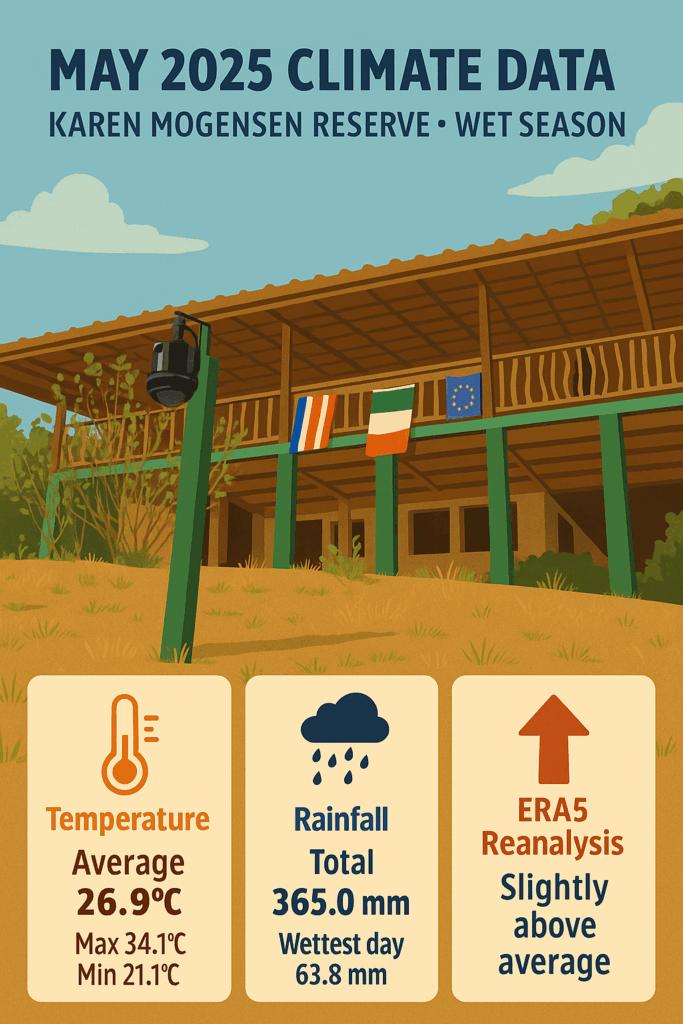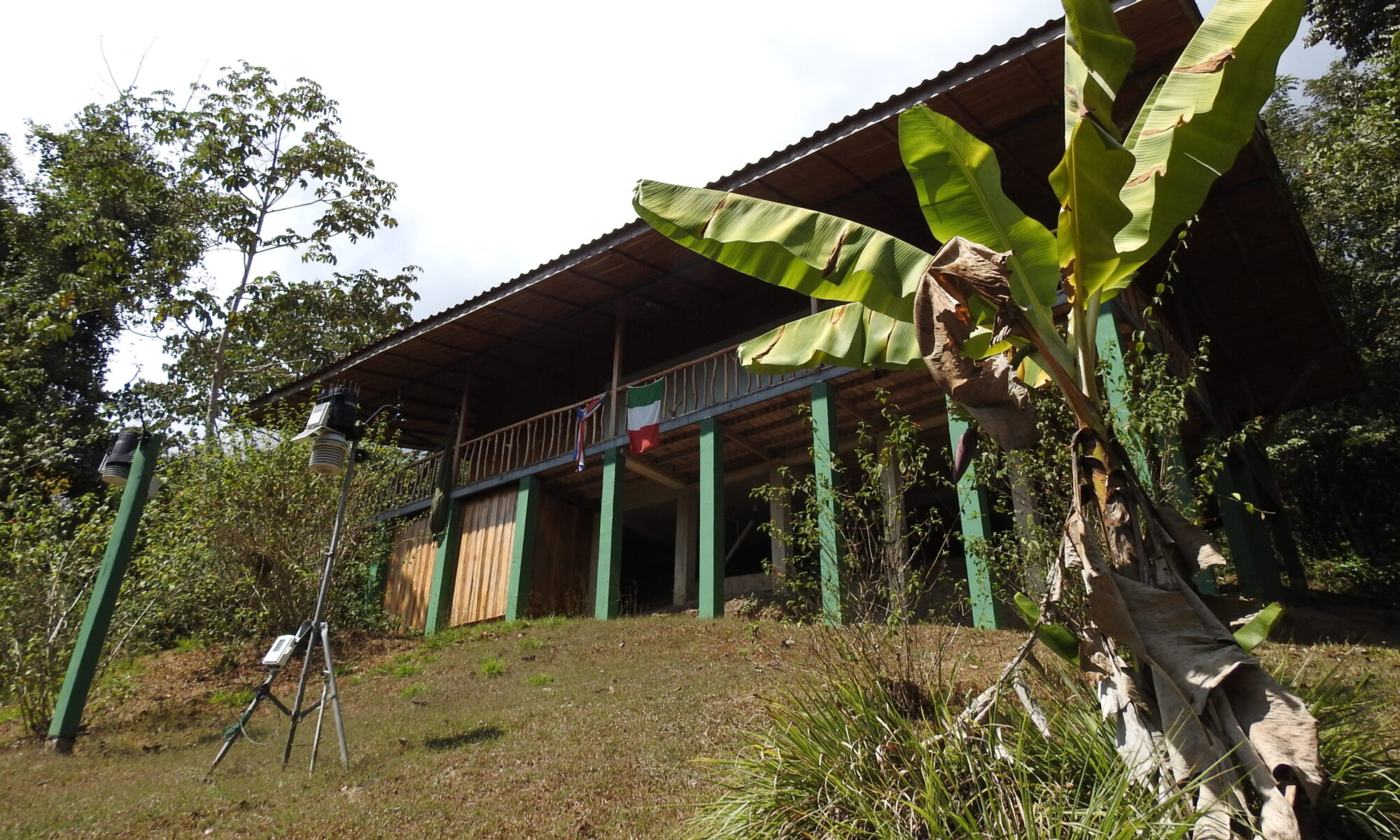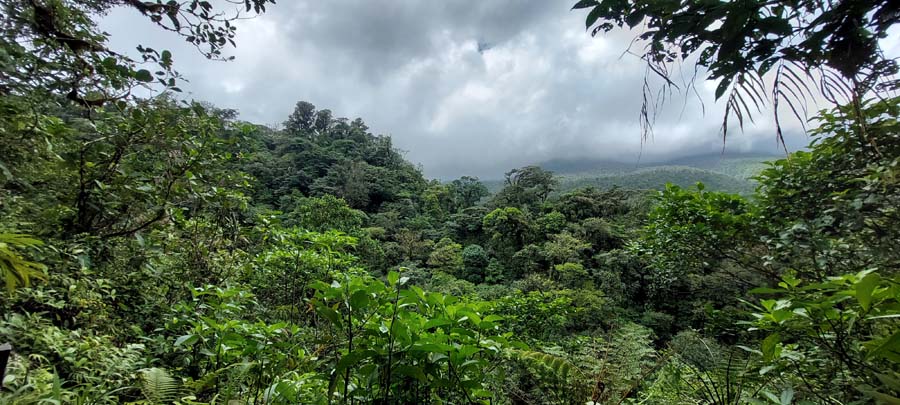🌿 Meteorological Report – May 2025
Biological and Meteorological Station Italy Costa Rica
Karen Mogensen Reserve – Foreste per Sempre odv

May 2025 marked the regular onset of the rainy season in the Karen Mogensen Reserve, Costa Rica. As per the tropical climate calendar, rainfall intensified progressively throughout the month, reaching a monthly total of 365.0 mm, distributed across multiple events, with a peak daily rainfall of 63.8 mm recorded on May 23.
🌡️ Temperatures: High but within tropical norms
Temperatures remained high and relatively stable, with a monthly average of 26.9°C, confirming the typical warm-humid regime of the region. The highest temperature was recorded on May 12 (34.1°C), while the lowest was 21.1°C on May 26. ERA5 reanalysis indicates a slight positive anomaly compared to climatology: average temperatures were slightly above normal, despite the end of the El Niño episode and the recent transition to a weak La Niña.
🌧️ Rainfall: Wet season in full swing
The wet season became well-established, with frequent rains, especially in the second and third weeks of the month. Daily data shows good rainfall distribution, with dry days alternating with typical tropical afternoon thunderstorms.
🌞 Solar radiation and UV: Intense values
Global solar irradiance was high: a total of 428 MJ/m² was recorded, with some days exceeding 18 MJ/m². UV doses peaked at 14.7 MED, confirming the intense exposure typical of tropical regions—an important factor for both the biosphere and local ecological dynamics.
🛰️ Data from a remote yet precious location
We are particularly proud of the reliable operation of our instrumentation, which continues to provide continuous, high-quality data in this remote yet critically important location for biodiversity and tropical climate monitoring. The collected data, regularly shared with the Geophysical Observatory of the University of Modena and Reggio Emilia, helps in understanding both local and global dynamics in a region that serves as a sentinel for climate change.
📍 Luca Lombroso, Meteorologo AMPRO
Foreste per Sempre OdV e Osservatorio Geofisico di UNIMORE


